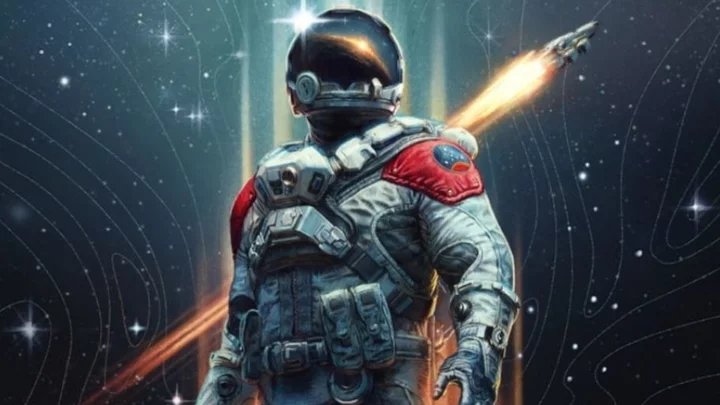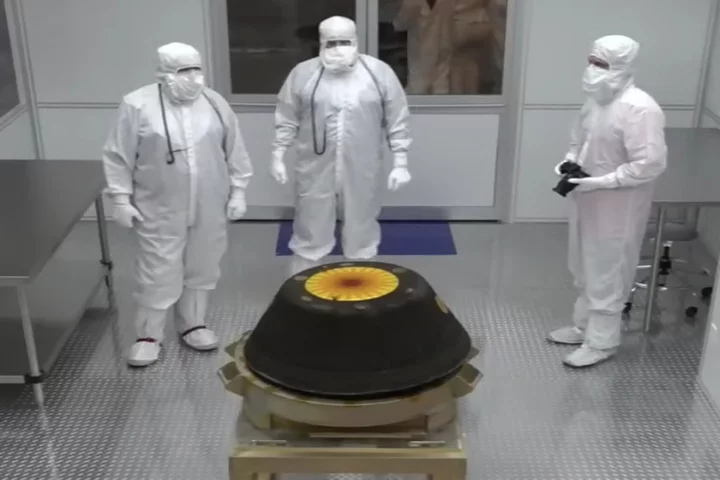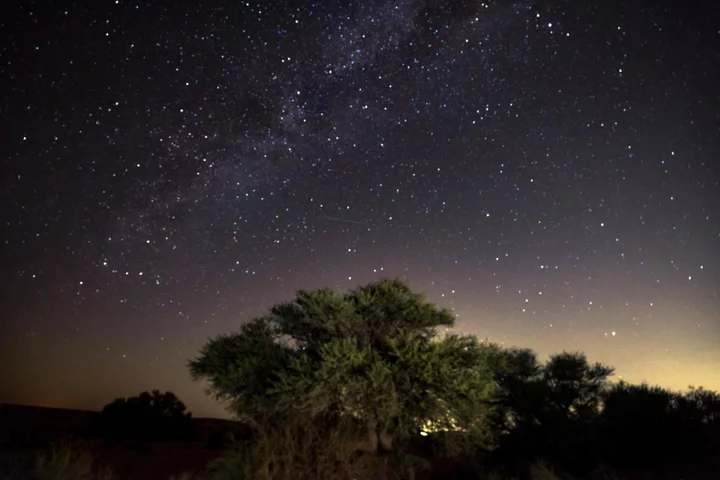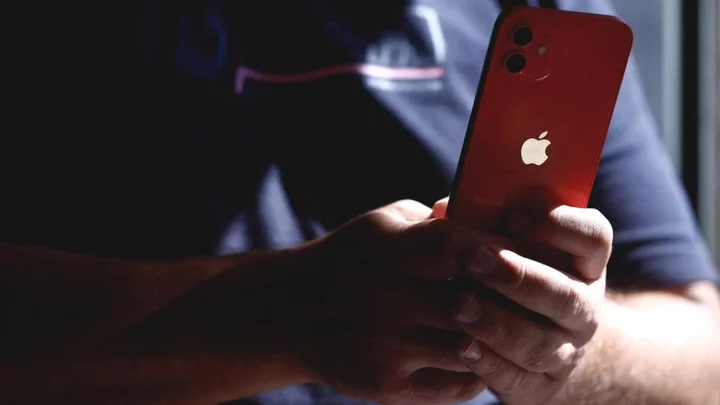
ChatGPT can now hear, see and speak as OpenAI gives the chatbot its most humanlike update
You can now speak aloud to ChatGPT and hear the artificial intelligence-powered chatbot talk back.
2023-09-26 02:58

Change This FC 24 Setting to Drastically Improve Your Defending
This FC 24 setting, Tactical Defending, will drastically improve your defending in game despite how strong Contextual Dribbling and Controlled Sprint are in this year's game.
2023-09-26 02:48

Apex Legends Halloween 2023 Event: Collection Event, Revenant Prestige Skin, Release Date
The Apex Legends Halloween 2023 Event features the Doppelgangers Collection Event, a Revenant Prestige skin, and a Halloween LTM starting on Oct. 17.
2023-09-26 02:47

Best Tempus Razorback Build in Warzone 2 Season 5
Check out the best Tempus Razorback build in Call of Duty: Warzone 2 Season 5 for a great sniper support weapon.
2023-09-26 02:28

Scientists develop simple test to help us find alien life
Scientists have developed a simple test in the search for alien life, they claim. The breakthrough helps the search for the “holy grail” of astrobiology: a reliable test that will determine whether there is or was life on other planets. The discovery uses artificial intelligence to determine with 90 per cent accuracy whether a sample is biological or not. And it could be used on existing samples, researchers say. That might mean, for instance, that we already have gathered the samples that could tell us whether there is life on Mars. Scientists hope that their test could be used on samples already collected by the Mars Curiosity rover’s Sample Analysis at Mars (SAM) instrument. The rover has an instrument on board to analyse those samples, and that data could be used in the test. The findings could also help tell us more about our own planet, revealing the history of mysterious and ancient rocks found on Earth. “The search for extraterrestrial life remains one of the most tantalizing endeavors in modern science,” said lead author Jim Cleaves of the Earth and Planets Laboratory, Carnegie Institution for Science, Washington, DC. “The implications of this new research are many, but there are three big takeaways: First, at some deep level, biochemistry differs from abiotic organic chemistry; second, we can look at Mars and ancient Earth samples to tell if they were once alive; and third, it is likely this new method could distinguish alternative biospheres from those of Earth, with significant implications for future astrobiology missions.” The technique does not look for specific molecules or compounds that could be indicative of life, as much previous work has done. Instead, it looks for small differences in the molecular patterns of samples using different kinds of analysis. It was built by giving an artificial intelligent system data about 134 known samples, with information about whether they are biotic or abiotic. To test it, it was then given new samples – including those from living things, remnants of ancient life and other abiotic samples that did not point to life, such as pure chemicals – and identified them with 90 per cent accuracy. The system also started predicting another kind of sample type, dividing the biotic ones into “living” and “fossils”. That means it could tell the difference between a freshly harvested leaf and something else that died long ago, for instance. Scientists hope that with time it could eventually be able to distinguish other hints in the data, such as signs of photosynthesis or cells that have a nucleus. Previous research has struggled because organic molecules tend t degrade over time. But the new method works even when the samples have decayed and changed significantly, the researchers behind it said. “This routine analytical method has the potential to revolutionize the search for extraterrestrial life and deepen our understanding of both the origin and chemistry of the earliest life on Earth,” said Robert Hazen, of the Carnegie Institution for Science, one of the leaders of the research. “It opens the way to using smart sensors on robotic spacecraft, landers and rovers to search for signs of life before the samples return to Earth.” The findings could also help solve mysteries on life. Many ancient rocks on Earth are at the middle of argument over whether they hold the oldest fossil microbes in life, while others say they do not have any life – and researchers are already feeding data about those rocks from Australia, Canada and elsewhere into the tool. “We’re applying our methods right now to address these long-standing questions about the biogenicity of the organic material in these rocks,” Hazen says. A paper describing the work, ‘A robust, agnostic biosignature based on machine learning’, is published in the Proceedings of the National Academy of Sciences. Read More Nasa has gathered a large piece of a distant asteroid. What now? Nasa spots shocking number of galaxies like our own Nasa just delivered a piece of a distant asteroid to Earth Nasa has gathered a large piece of a distant asteroid. What now? Nasa spots shocking number of galaxies like our own Nasa just delivered a piece of a distant asteroid to Earth
2023-09-26 02:25

Starfield 1.7.33 Update Details
This is everything you need to know about Starfield's Update 1.7.33.
2023-09-26 02:22

France Plans to Curb Power Prices to Boost Green Investment
France will introduce a law to curb power prices by the end of the year to encourage the
2023-09-26 02:15

AI, Robots and Satellite Sensors Are Helping in the Fight Against Wildfires
This year has been a challenging one for Phil Schneider, who hasn’t seen wildfire behavior like this in
2023-09-26 01:23

How to Unlock Skeletor Operator in Warzone 2
To unlock the Skeletor Operator in Warzone 2, players must purchase the Skeletor Bundle from the store during The Haunting for 2,400 COD points.
2023-09-26 01:22

Nasa has gathered a large piece of a distant asteroid. What now?
Scientists have gathered a significant chunk of a distant asteroid, which has made its way to Earth after a mission taking millions of miles. But the really useful work will begin now. Nasa’s Osiris-Rex mission flew to the distant Asteroid Bennu, scooped up a piece of the object into a canister, and then flew back to Earth to drop it off. On Sunday, Nasa picked up that canister in the Utah desert and is now working to secure it. It will then send those samples to a variety of scientists around the world, with a chunk of it being sent to more than 200 people at 38 different institutions across the world. They hope that they can use them as a “time capsule” to peer into the early universe, telling us about where we came from. “This box when it is opened of material from the surface of Bennu can tell us untold secrets of the origins of the universe, the origins of our planet and the origins of life itself,” said Queen musician Brian May, who helped with the research by mapping out the asteroid to find a landing spot. “What an incredibly exciting day.” Sample return missions are particularly exciting to scientists because they offer a look at a pristine piece of a distant world that has been undisturbed by the environment on Earth. While some pieces of asteroids and other objects can fall down to Earth, they have to make their way through the atmosphere and can be damaged and changed in the process. They also mean that researchers are able to use all of the Earth’s latest technology to study the sample. Other pieces of distant worlds have of course been studied by spacecraft and landers, but they are only able to do so with the limited instruments they take to those planets. Another advantage of sample return missions over studying the objects at their home is that scientists can look back at those samples with new sensors and equipment invented long after the sample was actually taken. Many space missions continue for years – Curiosity is still examining Mars after arriving there in 2012, and the Voyager probes are still providing information almost 50 years after they were launched – but they are only able to do so with the technology that was available when they set off. The analysis done in sample return missions really begins when the spacecraft arrives at its target: then, it starts looking at the context of the sample, gathering information about the world from which it came that should prove useful to scientists later. Osiris-Rex arrived at Bennu in 2018, and spent two years mapping the asteroid before it set off back home with its delivery. All of that information in addition to the samples could help answer a variety of questions about our planet, scientists hope. “The asteroids in our solar system contain the raw building blocks from which the Earth was made, so working out their composition will tell us a lot of how our planet formed,” said Boris Gansicke from the department of physics at the University of Warwick. “There are many open questions, for instance, where did the water that we have on Earth come from? And where did the ingredients that made life possible to develop come from? “To answer those questions, ie measure the composition of an asteroid, you need to get your ‘hands’ on them (or in this case the arm of a space mission), and this is what Osiris-Rex achieved. “In a nutshell, it’s similar to sitting in front of a delicious dinner and wanting to have the list of ingredients.” Sample return missions are almost as old as space travel itself, and the first of them were the early Apollo missions, which brought back pieces of the Moon. Those continue to be useful to scientists. Since then, as human travel into space has declined, most of the work has been done by robots. In the early 1970s, the Soviet Union’s Luna missions gathered pieces of the Moon and brought them back, and in 2020 Japan’s Hayabusa2 mission brought back pieces of the asteroid Ryugu. Scientists have high hopes for future missions: perhaps the most discussed is a mission to Mars, which would bring back the first ever pieces of that planet. Engineers have suggested that for decades, and a number of plans have been formed, but none are likely to launch any time soon. Read More Nasa spots shocking number of galaxies like our own Nasa lands Bennu asteroid samples back on Earth Nasa just delivered a piece of a distant asteroid to Earth Pieces of a distant asteroid are about to fall to Earth Nasa to return largest asteroid sample ever as UK helps with research Massive solar flare strikes Nasa spacecraft sent to study Sun
2023-09-26 00:45

Nasa spots shocking number of galaxies like our own in early universe
Scientists have spotted a shocking number of galaxies like our own in the early universe. The finding will prompt us to entirely rethink our understanding of how the universe formed the structures that surround us. Looking deep into space, scientists found that the galaxies we see in the early universe are much more like our own Milky Way than was thought possible. A team of international researchers including those at The University of Manchester and University of Victoria in Canada, used the James Webb Space Telescope (JWST) to discover that galaxies like the Milky Way are 10 times more common than what was believed based on previous observations with the Hubble Space Telescope. Many of these galaxies formed some 10 billion years ago or longer, going far back into the history of the universe. The Milky Way is a typical disk galaxy, with a shape similar to a pancake or compact disc, rotating about its centre and often containing spiral arms. These galaxies might be the kind where life can develop given the nature of their formation history, experts suggest. Astronomers previously considered these types of galaxies too fragile to exist in the early universe when galaxy mergers were more common, destroying what was thought to be their delicate shapes. Christopher Conselice, professor of extragalactic astronomy at The University of Manchester, said: “Using the Hubble Space Telescope we thought that disc galaxies were almost non-existent until the universe was about six billion years old, these new JWST results push the time these Milky Way-like galaxies form to almost the beginning of the universe.” He added: “These JWST results show that disc galaxies like our own Milky Way, are the most common type of galaxy in the universe. “This implies that most stars exist and form within these galaxies which is changing our complete understanding of how galaxy formation occurs. “These results also suggest important questions about dark matter in the early universe which we know very little about.” “Based on our results, astronomers must rethink our understanding of the formation of the first galaxies and how galaxy evolution occurred over the past 10 billion years.” The researchers say their findings, published in the Astrophysical Journal, completely overturn the existing understanding of how scientists think the universe evolves, and the scientists say new ideas need to be considered. Lead author Leonardo Ferreira, from the University of Victoria, said: “For over 30 years it was thought that these disc galaxies were rare in the early universe due to the common violent encounters that galaxies undergo. “The fact that JWST finds so many is another sign of the power of this instrument and that the structures of galaxies form earlier in the universe, much earlier in fact, than anyone had anticipated.” The improved technology of JWST allows astronomers to see the true structure of these galaxies for the first time. A paper describing the findings, ‘The JWST Hubble Sequence: The Rest-Frame Optical Evolution of Galaxy Structure at 1.5 The Astrophysical Journal. Additional reporting by agencies Read More Nasa just delivered a piece of a distant asteroid to Earth Nasa lands Bennu asteroid samples back on Earth Pieces of a distant asteroid are about to fall to Earth Nasa just delivered a piece of a distant asteroid to Earth Nasa lands Bennu asteroid samples back on Earth Pieces of a distant asteroid are about to fall to Earth
2023-09-26 00:18

Carvana and NRG Partner to Launch Esports Challenge: The Search for the Next Rocket League Pro Begins
PHOENIX--(BUSINESS WIRE)--Sep 25, 2023--
2023-09-26 00:15
You Might Like...

What happened between xQc and YourRAGE? Rivals nominated in same category for Streamy Awards 2023

French iPhone 12 warning: European regulators examine alert on radiation levels

OneRail Teams Up with Bungii to Expand Its Big and Bulky Delivery Network

Hong Kong protest anthem's online presence fades as govt seeks total ban

Feel Like Screaming Into the Void? This Website Lets You Do Just That

SigmaSense Announces Technology Licensing and Co-development with NXP Semiconductors to Meet the Heightened Demands of Future Sensing Systems

Results of a new Antibacterial Technology from DeBogy Molecular that reduces Bacteria and Deadly Infection in Medical Implants reported in the Journal of Orthopedic Research

Lina Khan Got Stuck in the Fallout of the MGM Hack at Las Vegas
